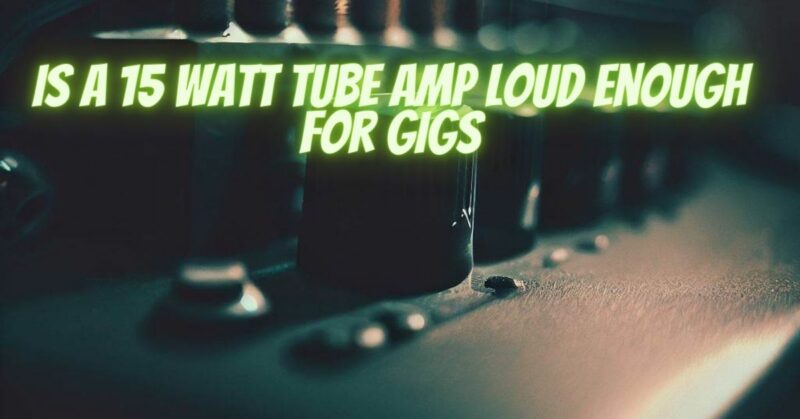Whether or not a 15-watt tube amp is sufficient for live performances depends on a number of factors, including the size and type of venue, the volume of the band, the type of music being played, and the guitarist’s personal preferences.
In general, a 15-watt tube amp is sufficient for small to medium-sized venues, such as clubs and bars, and for playing with a band that is not too loud. However, if you are playing in a large venue, or if you are playing with a very loud band, you may need a more powerful amp. The type of music you are playing also plays a role in determining whether or not a 15-watt tube amp is sufficient. If you are playing clean tones, or if you are playing with a lot of effects pedals, then a 15-watt amp may be sufficient. However, if you are playing distorted tones, or if you are not using many effects pedals, then you may need a more powerful amp.
Here are some additional things to consider when deciding whether or not a 15-watt tube amp is sufficient for live performances:
- The size of the venue. The larger the venue, the more powerful the amp you will need. This is because you will need to be able to project your sound over a larger area.
- The volume of the band. The louder the band, the more powerful the amp you will need. This is because you will need to be able to compete with the other instruments in the band.
- The type of music you are playing. Clean tones are easier to amplify than distorted tones. So, if you are playing clean tones, you may be able to get away with a lower-wattage amp.
- Your personal preferences. Some guitarists prefer to use a more powerful amp, even in small venues. This is because they like to have a lot of headroom and they want to be able to push their amp hard. Other guitarists prefer to use a lower-wattage amp, even in large venues. This is because they like the sound of a cranked-up low-wattage amp better than the sound of a lower-wattage amp that is not cranked up.
If you are not sure whether or not a 15-watt tube amp is sufficient for your needs, it is always better to err on the side of caution and get a more powerful amp. You can always turn down the volume on a more powerful amp, but you can’t turn up the volume on a less powerful amp if it’s not loud enough.
Here are some tips for getting the most out of your 15-watt tube amp in live performances:
- Mic your amp. This will help to amplify your sound and make it easier to hear you over the rest of the band.
- Use a monitor. A monitor will allow you to hear yourself better on stage.
- Experiment with different mic placement. The placement of the mic can have a big impact on the sound of your amp. Try placing the mic in different positions to see what sounds best to you.
- Experiment with different amp settings. The settings on your amp can also have a big impact on the sound. Try different settings to see what sounds best to you.
- Use a boost pedal. A boost pedal can help to increase the volume of your signal, which can be helpful if you are playing in a loud band or a large venue.
- Use a parametric EQ pedal. A parametric EQ pedal can be used to boost or cut specific frequencies, which can help to improve the sound of your amp in a live setting.
By following these tips, you can get the most out of your 15-watt tube amp in live performances.
Here are some additional tips for guitarists who are using a 15-watt tube amp in live performances:
- Arrive early to the venue and give yourself plenty of time to set up and soundcheck. This will give you time to experiment with different mic placement and amp settings to find what sounds best.
- Be aware of the volume of the other instruments in the band and adjust your volume accordingly. You don’t want to be too loud or too soft.
- Don’t be afraid to ask for help from the sound engineer. They can help you to get the best possible sound out of your amp.
With a little planning and effort, you can get a great sound from a 15-watt tube amp in live performances.


